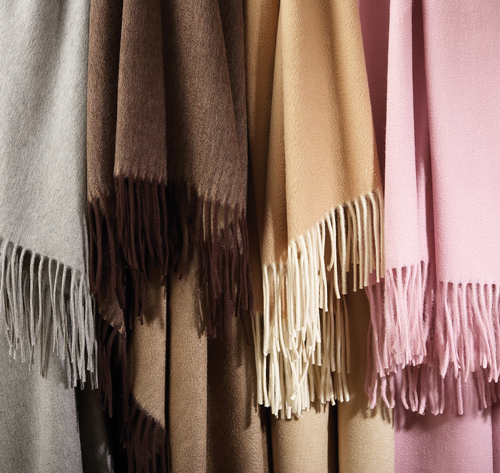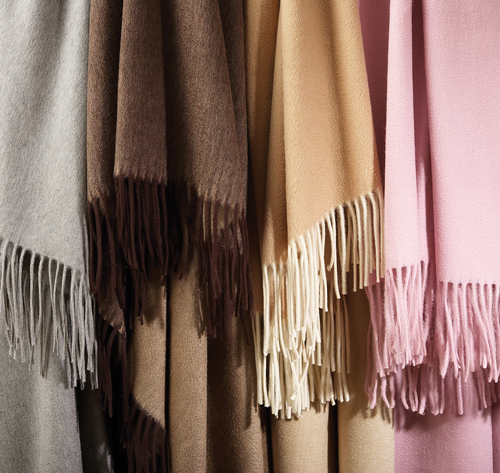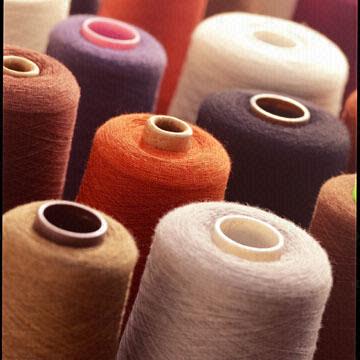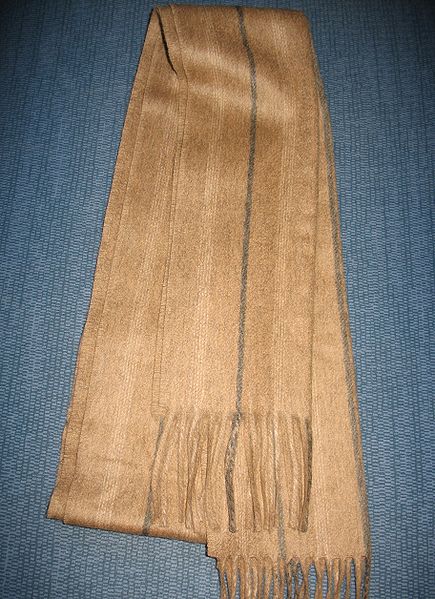
Cashmere
Cashmere is a fiber obtained from the Cashmere breed of goats. Is a soft wool fiber with a fine texture is strong enough to be carried on for decades. The word is derived from an old spelling of the state of Kashmir, India.
Origin and History
The traces of Cashmere goes back to the time when Mughals ruled India, discovered between the 3rd century BC to 11th century AD. However, as per several historical findings, it was in the 15th century that Cashmere was brought into its real form and the fiber was given its true worth by the ruler of Kashmir Zayn-ul-Abidin, as he also brought into the picture some distinguished weavers of Turkestan.
As the years started passing by, the weaving of Cashmere shawls took over the market in Scotland with a roaring demand. This gave rise to the process of trading between several countries, especially Europe and Asia. A lot of competitors hit the market, as French shawls starting posing threats to these Kashmir shawls.
Style & Attire
Cashmere has taken the disguise of many fashion trends and styles. In today’s scenario, one can find the essence of this fiber in the form of overcoats, sweaters, vests, skirts, suits, leggings, dresses, as well as many Indian outfits. Cashmere is also given the latest essence in the guise of leather, suede as well as different kinds of natural textures which suit the needs and preferences of the growing ‘stylish population’.
Sources of Inspiration
The magic of the outer layer of this fabric initially began to marvel people in the form of scarves, sweaters, winter coats, etc. Later on, this fiber went on to create more wonders across the globe by its multi-faceted purposes and trends. Basically, the top layer of this elegant fiber has a straight coarse texture which possesses the characteristic of resisting elements on it. However, the second layer of this fiber gives out a very soft and smooth essence as it has a soft undercoat of hair.
Production
Spanning across regions spread from China to Iran, Cashmere is majorly produced in Mongolia today with approximately 60% of the global production.The process used in the manufacture of Cashmere varies from place to place. For example, at some places while the wool is shaved by hands, at other places a mechanical process is used for shearing the animals. Cashmere is collected during springs, which is when the goats naturally shed their skin.
Varieties
This fabric, which once gained popularity with various manifestations in the form of woolen clothing, has now spread to varieties of its kind in the form of Vicuna Cashmere and textures like silk and suede. These materials of lighter weight have grown in demand. Hence, their varieties are selling immensely in countries like Australia, Iraq, New Zealand, Afghanistan, and Iran, amongst others.
Innovation and Global Wearability
As it possesses an effective insulating property, Cashmere is able to adapt itself to the humidity levels in the air. With the passage of time, this fabric has turned out to be the latest fashion trend, especially among women. Besides apparel of the winter seasons, this fabric is woven into many unique outfits, which suit every season of the year. Scarves, coats and even trendy shoes form part of the ensemble.
This fabric has gained popularity beyond the boundaries of Kashmir and has managed to capture the hearts of people in India, U.S, U.K, and the Middle East.
Suitability
Cashmere’s light and royal colors are sober as well as elegant, making it perfect for ceremonial occasions and formal meetings.
Maintenance
It is recommended to wash Cashmere in lukewarm water, as its fiber is very delicate and smooth.
Interesting Facts and Comparisons
- Pashmina fabric always been the competitor to Cashmere. However, the Cashmere fabric proved to be the winner crediting to its extra comfort and softness as well as in comparatively lower pricing.
- Cashmere is also extracted from goat kids, which is never sold in bulk and kept limited.
References
Categories: Textiles



